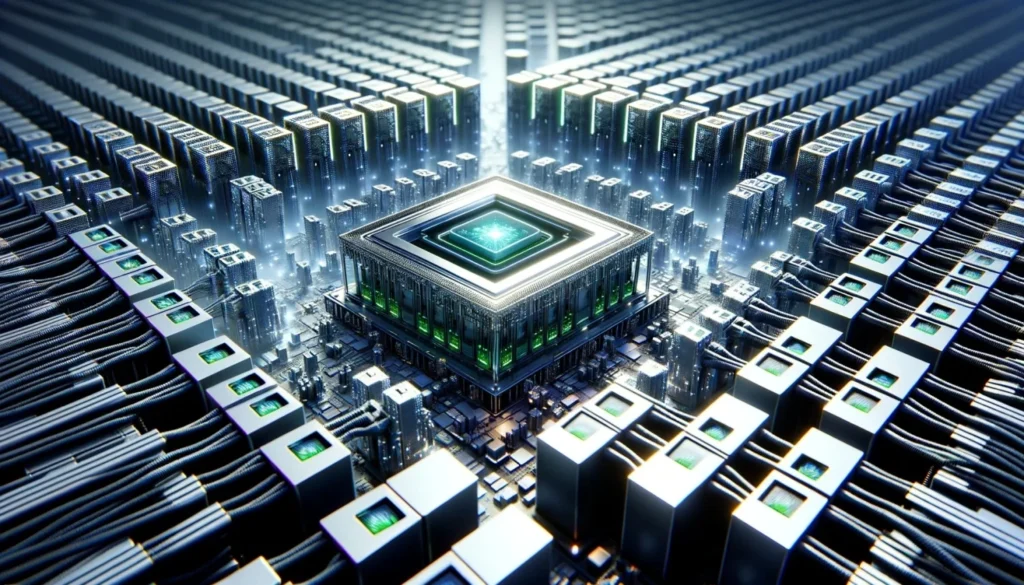Reports from Reuters, citing The Information, reveal xAI’s ambitious plans to construct a massive supercomputer, dubbed the Gigafactory of Compute, aimed at enhancing its AI chatbot, Grok. Elon Musk, the driving force behind xAI, intends to have this groundbreaking supercomputer operational by fall 2025, potentially in collaboration with tech giant Oracle. This move is poised to position xAI as a frontrunner in the AI arena, surpassing existing GPU clusters both in scale and capability.
Elon Musk’s presentation to investors unveiled the scale of the endeavor, disclosing plans to incorporate up to 100,000 Nvidia H100 GPUs based on the Hopper architecture. This configuration would dwarf existing GPU clusters by at least four times, signaling xAI’s commitment to leveraging cutting-edge hardware for its AI endeavors. Despite the availability of newer Nvidia GPU models, xAI’s decision to opt for the H100 GPUs underscores the magnitude of its investment and ambition, although the rationale behind this choice remains unclear.
The significance of this supercomputer project cannot be overstated, as Musk personally shoulders the responsibility for its timely delivery, recognizing its pivotal role in advancing xAI’s AI capabilities, particularly in the development of large language models. By bolstering its computational infrastructure, xAI aims to position itself as a formidable competitor to industry giants like OpenAI and Google, with Musk leveraging his experience as a co-founder of OpenAI to drive xAI’s growth trajectory.
The necessity for such a powerful computing infrastructure becomes apparent when considering the computational demands of xAI’s AI initiatives. For instance, the Grok 2 model required approximately 20,000 Nvidia H100 GPUs for training, while future iterations, such as Grok 3, are projected to necessitate a staggering 100,000 GPUs. This underscores the imperative for xAI to invest in scalable and robust computing resources to support its ambitious AI development roadmap.
Despite the magnitude of the undertaking, neither xAI nor Oracle has provided official comments on the collaboration, leaving certain aspects of the partnership and supercomputer project subject to speculation. Nonetheless, Musk’s commitment to pushing the boundaries of AI technology through substantial infrastructure investments and strategic partnerships is evident from his presentation to investors. As xAI endeavors to establish itself as a dominant player in the AI landscape, the successful realization of the Gigafactory of Compute could mark a significant milestone in the company’s journey towards AI innovation and leadership.
The magnitude of the Gigafactory of Compute project cannot be overstated, as Elon Musk personally assumes accountability for its timely fruition, acutely aware of its pivotal role in catapulting xAI’s AI capabilities to unprecedented heights. The deployment of such an advanced supercomputing infrastructure is poised to equip xAI with an enviable competitive edge, enabling it to emerge as a formidable contender in the fiercely competitive AI landscape, where titans like OpenAI and Google reign supreme. Musk’s formidable experience as a co-founder of OpenAI lends credence to xAI’s aspirations of carving a prominent niche in the AI domain.
The imperative for such a formidable computing infrastructure becomes abundantly clear when one considers the prodigious computational requirements of xAI’s ambitious AI endeavors. For instance, the training of the Grok 2 model necessitated the utilization of approximately 20,000 Nvidia H100 GPUs, a staggering figure that underscores the voracious appetite for computational resources inherent in AI model development. With future iterations such as Grok 3 anticipated to demand an unprecedented 100,000 GPUs, xAI finds itself at the precipice of an era defined by unparalleled computational complexity.
If you like the article please follow on THE UBJ.
